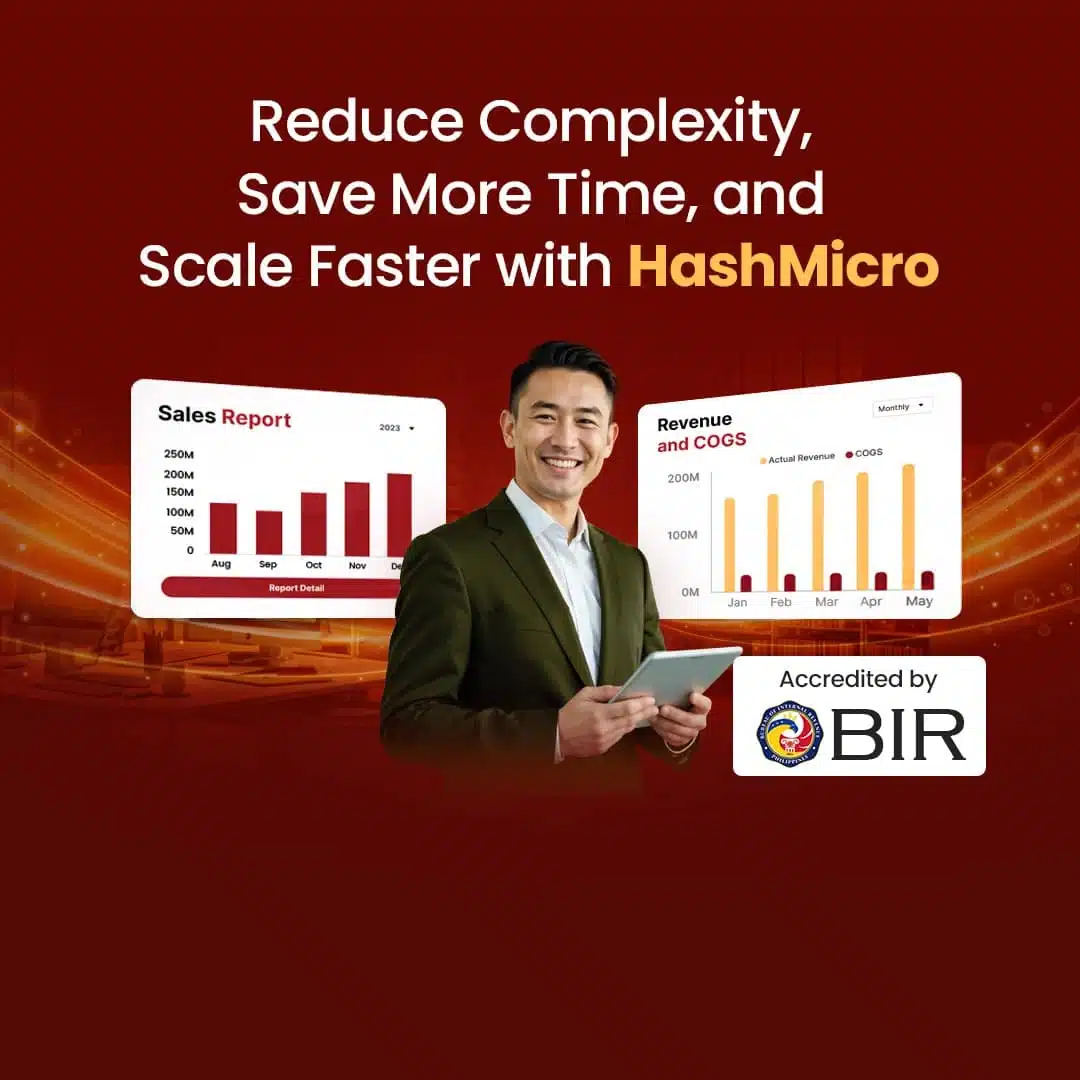Are you a business owner in the Philippines looking to implement an Enterprise Resource Planning (ERP) system? It’s important to understand and control your ERP Total Cost of Ownership (TCO). By minimizing ERP costs, you can optimize your investments and drive business growth.
When it comes to implementing an ERP system, the costs involved go beyond the initial software purchase or license. Understanding the full scope of ERP TCO is essential for businesses to set realistic budgets, plan effectively, and achieve their desired outcomes.
Whether you are in the manufacturing, retail, or service industry, this article will equip you with the knowledge to optimize your ERP investment for long-term success. Let’s delve into the significance of ERP Total Cost of Ownership for businesses.
Table of Contents
Understanding ERP TCO
ERP Total Cost of Ownership (TCO) is a critical aspect that businesses in the Philippines need to comprehend to make informed decisions about their investments. TCO refers to the overall expenses associated with implementing, operating, and maintaining an ERP system.
When it comes to ERP TCO, there are several components and factors to consider. These include the initial software and hardware costs, licensing fees, training and consultancy expenses, data migration challenges, and ongoing support and maintenance costs.
Understanding ERP TCO is essential because it has significant financial implications for businesses. By assessing TCO, organizations can make proactive decisions regarding their IT investments and manage their budgets effectively.
By grasping the significance of assessing and managing ERP TCO effectively, businesses in the Philippines can optimize their investments and ensure sustainable growth.
Calculating ERP TCO
To make informed decisions regarding ERP implementation, it is crucial to have a clear understanding of the total cost of ownership (TCO). Calculating ERP TCO involves considering both direct and indirect costs associated with the implementation and maintenance of the ERP system.
So, what is the comprehensive formula for calculating ERP TCO?
It consists of various cost elements such as software licensing, hardware expenses, implementation services, training, data migration, maintenance, and ongoing support.
However, it is important to be mindful of the hidden costs that often come with ERP implementation. These hidden costs can include unforeseen expenses related to system customization, additional hardware requirements, unforeseen data migration challenges, and potential productivity dips during the initial stages of implementation.
Uncovering and accounting for these hidden costs is integral to accurately calculating ERP TCO. Being proactive in identifying and addressing these potential financial pitfalls will contribute to a more accurate assessment of the true cost of implementing and maintaining the ERP system.
Critical Factors Affecting ERP TCO

When it comes to ERP Total Cost of Ownership (TCO), there are several critical factors that businesses in the Philippines need to consider. These factors directly impact the overall cost and success of an ERP implementation. Let’s explore these factors in detail:
- Software License Costs: ERP TCO includes significant expenses in software license fees. Understanding vendors’ pricing models and licensing agreements is crucial for accurate long-term cost assessment.
- Legacy System Transition: Shifting from legacy systems to modern ERPs poses challenges, such as data migration, system integration, and customization. These additional costs must be evaluated carefully for a smooth transition.
- Hardware Expenses: Upgrading or acquiring hardware for ERP implementation is another consideration. Costs include servers, network equipment, and storage devices essential for efficient system operation.
- Consultancy Fees: External consultants or implementation partners can impact TCO. Businesses should assess the need for external support and negotiate costs for optimal value.
- Training Costs: Comprehensive training programs are essential for successful ERP adoption, mitigating productivity dips. Budgeting for training facilitates effective system utilization.
- Data Migration Challenges: Migrating and integrating data into the new ERP platform is complex and time-consuming. Accounting for data cleansing and validation is crucial to avoid issues and unexpected costs.
- Productivity Dips: Initial ERP implementation may cause short-term productivity dips as employees adapt. Preparing for this period minimizes its impact on operations.
- Quality Assurance: Ensuring ERP implementation quality is vital. Allocating resources for testing and bug fixes prevents costly rework and inefficiencies.
- Future Upgrades: ERP systems require periodic updates to stay current. Businesses should consider future upgrade costs for software updates and compatibility testing.
- Carrying Costs: Ongoing maintenance, support, and licensing fees contribute to ERP TCO. These expenses should be factored into budgeting for realistic overall costs.
By understanding and addressing these critical factors, businesses can make more informed decisions and effectively manage ERP Total Cost of Ownership (TCO) in the Philippines.
Comprehensive List of ERP TCO Elements
When assessing and managing ERP Total Cost of Ownership (TCO), businesses must have a comprehensive understanding of the various cost elements involved.
Below is a comprehensive list of the 28 key cost elements that businesses should consider when evaluating ERP TCO:
- Licensing fees
- Software customization
- Hardware infrastructure
- Database management
- Data migration
- Integration costs
- Implementation services
- Training and user adoption
- Ongoing system support and maintenance
- Upgrades and updates
- Data security and compliance
- Disaster recovery
- Change management
- Business process optimization
- Testing and quality assurance
- Legacy system decommissioning
- Internal IT resources
- System performance monitoring
- Business intelligence and reporting
- Third-party software and service fees
- Vendor maintenance and support
- Cloud hosting or infrastructure costs
- Telecommunication expenses
- End-user device management
- User licenses
- Custom development
- System documentation and documentation management
- Audit and compliance management
By considering these critical cost elements, businesses can gain a comprehensive understanding of their ERP total cost of ownership (TCO) and make informed decisions regarding their investment.
It is essential to assess each element carefully and incorporate them into budgeting and planning processes, ideally utilizing robust business budgeting software to enhance accuracy and efficiency.
If you are interested in learning more about how ERP TCO can help optimize your investments, click on the banner below to view HashMicro ERP’s pricing scheme.

Strategies to Reduce ERP TCO
Reducing ERP Total Cost of Ownership (TCO) is essential for Philippines businesses looking to optimize their investments and achieve long-term growth. By implementing effective strategies, you can minimize TCO and maximize the value derived from your ERP system.
Here are some actionable insights and best practices to help you reduce ERP TCO:
- Optimize Software Licenses: Review your software license needs and explore consolidation or more cost-effective options. Negotiate with vendors based on your usage patterns to secure better terms.
- Streamline Legacy System Transition: Efficient planning and resource allocation during the transition from legacy systems can significantly reduce TCO. Implement industry best practices for a smooth and cost-effective transition.
- Control Hardware Expenses: Reduce hardware costs and enhance scalability by considering cloud hosting or virtualization. Moving ERP systems to cloud platforms eliminates on-premises infrastructure needs, cutting maintenance expenses.
- Opt for Expert Consultancy: Engage experienced ERP consultants to guide implementation and avoid costly mistakes. Their expertise streamlines workflows, optimizes configurations, and minimizes costly customizations.
- Invest in Comprehensive Training: Well-trained employees reduce errors and system issues, lowering TCO. Invest in thorough training to ensure proficiency in ERP system use.
- Address Data Migration Challenges: Plan and execute data migration carefully to avoid unnecessary costs and system issues. Cleanse and validate data thoroughly to prevent inconsistencies and post-migration problems.
- Minimize Productivity Dips: Proactively manage ERP implementation’s impact on productivity with a change management plan and effective communication. Provide necessary support to minimize productivity dips.
- Ensure Quality Assurance: Invest in rigorous testing to identify and rectify system errors early, preventing downtime and reducing support and maintenance costs.
- Plan for Future Upgrades: Strategically plan for future ERP upgrades aligned with business goals. Utilize vendor resources to reduce the cost and effort of upgrades.
- Understand Carrying Costs: Account for ongoing expenses such as maintenance, support, and security to accurately assess TCO. Factor in system enhancements, bug fixes, and vendor support costs.
Understanding the Return on Investment (ROI) from Your ERP System

After exploring strategies to reduce ERP Total Cost of Ownership (TCO), it’s equally important to understand the Return on Investment (ROI) your ERP system brings. ROI analysis complements TCO by focusing on the benefits and value derived from your ERP investment.
Calculating ERP ROI
To calculate ERP ROI, subtract the total costs identified in the TCO analysis from the financial benefits gained through efficiency improvements, cost savings, and revenue growth attributable to the ERP system.
The Significance of ERP ROI
Understanding ERP ROI is vital for businesses in the Philippines. It helps quantify the financial gains from ERP systems, ensuring that investments are not just cost-effective but also value-generating.
Conclusion
Navigating ERP costs is crucial for making informed decisions and driving business growth in the Philippines. Understanding and managing ERP Total Cost of Ownership (TCO) is paramount in optimizing your investment and ensuring long-term success.
Additionally, leveraging renowned platforms like HashMicro can further reduce TCO, thanks to their comprehensive suite of integrated business applications, which eliminate the need for separate software licenses and costly customizations.
With a clear understanding of ERP Total Cost of Ownership and the right tools and strategies in place, you can confidently navigate ERP costs and make informed decisions that propel your business forward in the Philippines.
Take control of your ERP journey, manage your costs effectively, and position your business for long-term success with HashMicro ERP software. Try the free demo now!




































